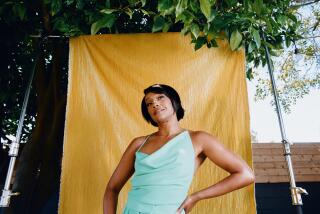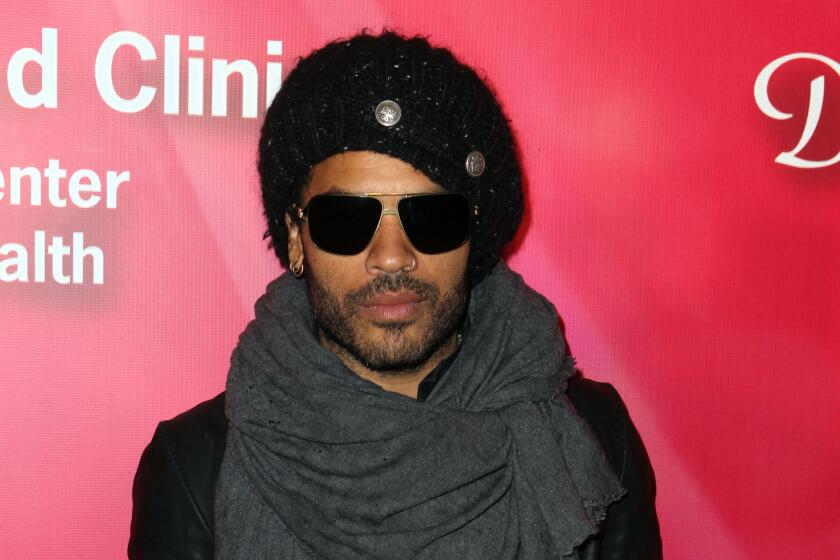At Wall Street museum, financial crisis staged a takeover
The little museum on Wall Street did not know what it was in for when it decided to tackle the financial crisis.
It began in a neglected corner of the institution’s marbled grand hallway. Once home to the historic Bank of New York, the space was converted to hold exhibitions about Alexander Hamilton, futures trading and the history of the Dow Jones industrial average.
After Wall Street was shaken to within an inch of its life in 2008, the curators of the Museum of American Finance decided to add a section explaining what happened. The modest display featured panels depicting the greed and blunders leading up to the government’s $700-billion bailout of the financial industry.
That was in March 2009, just after the government took a controlling stake in Citigroup. But the controversies kept coming — General Motors and Chrysler went bankrupt, the leaders of the Galleon Group hedge fund were arrested, Greece almost went broke — and so new panels were added to keep up.
Soon enough, a display on entrepreneurs had to be moved so that the crisis panels could snake their way along the entire front wall of the museum.
“I’ve got a few friends who think it may be going around the entire room,” said David Cowen, the hedge fund manager who now runs the museum.
That might be good for business, since the financial crisis has added some sizzle to the once-sleepy museum. Attendance is expected to double this year, to 35,000, and the best-selling item in the gift shop is a poster set of the financial crisis exhibit, supplanting the silver bear and bull statues that were longtime favorites.
Admission is $8, and passersby are lured in by a poster board that screams “SCANDAL!” and a flag advertising the “Mu$eum” inside. The institution also offers a “Scandals and Scoundrels” walking tour that takes in scenes of Wall Street notoriety.
“I’ve never found another place like this — and I’m interested in this stuff,” said Lisa Ellerton, who works in insurance and made her first visit to attend the walking tour on a recent Saturday along with her parents.
The crisis is also responsible for giving the museum its director, Cowen, who worked for 14 years as a currency trader at Deutsche Bank and Bankers Trust before he started his own hedge fund. It was only when investors pulled money out of his hedge fund in 2008 that he began discussions with the museum.
“If it hadn’t been for the credit crisis, it’s not an opportunity I would have looked at,” said Cowen, who holds a doctorate in history from New York University. “I would have been managing my fund.”
The museum was founded in 1989 by John Herzog, who ran a firm that was a market maker for Nasdaq stocks. An avid collector of financial memorabilia, Herzog launched the enterprise in a cramped room in the Standard Oil building on Broadway, where there was space for only a single temporary exhibit.
After the New York Stock Exchange closed its own visitor center in the wake of the Sept. 11 terrorist attacks, the museum sought a bigger home so that it could take on the role of the unofficial visitors center for the Street — and one of the only museums about finance in the world.
It eventually settled in on the second floor of the Bank of New York building, built in 1929 on the site where Hamilton originally founded the bank. Much of the collection is less than remarkable: vintage stock certificates, yellowed copies of the Wall Street Journal and video screens showing scenes from the stock exchange floor.
The exhibits dedicated to financial misdeeds have more edge, but also pose something of a risk for an institution that relies on Wall Street donations to make its $3.3-million annual operating budget.
“It’s got to be very tough for a museum on Wall Street to look at these problems,” said Gretchen Sullivan Sorin, director of the museum studies program at the State University of New York in Oneonta. “One would think they would want to cover them up as much as possible.”
The financial industry, Sorin notes, is not known for taking a critical look at itself. She recalled attending a meeting with the historian of the New York Stock Exchange.
“She said, ‘I’m allowed to say anything about the history of the exchange as long as I don’t mention 1929,’ ” Sorin remembered with a laugh.
Among the museum’s biggest donors are Wells Fargo, the New York Stock Exchange and Goldman Sachs. The latter is a featured stop on the Scandals and Scoundrels tour.
Annaline Dinkelmann, a South African native, chooses her words carefully as she leads a group of about 20 people past Goldman’s 30-story headquarters on Broad Street.
“I want to make it clear, Goldman Sachs is not guilty of any crime,” she said while standing under the brown stone archway in front of the building. “We all have our personal opinions, but Goldman had their court case against them and they settled out of court.”
But she also explains that the firm was hit with a big fine and became the target of criticism that it was “unfairly privileged in the financial crisis” thanks to the taxpayer bailout.
Goldman Sachs declined to comment on its relationship with the museum. But a spokesman for another big donor — the NYSE — said it was happy to support public understanding of capitalism, warts and all.
“The museum is an independent educational institution that examines historical themes, both positive and negative, and develops its own exhibition programs that we are proud to support,” NYSE spokesman Ray Pellechia .
Cowen, who also serves as a fund-raiser for the museum, says the decision to highlight scandal has not hurt efforts to raise money. Still, he said he has received some “interesting feedback” about the exhibits from key donors.
“They’re happy that we recognize the difficult times and are objective about it,” he said. “Most of them walk out with a poster set. It’s like a badge of honor, ‘I survived this thing.’ ”
Aside from the usual challenges facing museums — raising money, attracting visitors and the like — the Museum of American Finance has an added burden: making its exhibits comprehensible.
The “Tracking the Credit Crisis” area includes color-coded charts and explainer boxes with definitions of things such as credit default swaps and toxic assets.
It takes time to follow it all. The other day, Chandra Laib could be found sitting down in front of the panels, reading each segment carefully.
“You hear it and you read it in newspapers, and you kind of think you know what it is — and what happened — but in the end you don’t,” said the 24-year-old medical student from Germany. “Now I’m reading through every word and thinking, yeah, OK, now I know.”
More to Read
The biggest entertainment stories
Get our big stories about Hollywood, film, television, music, arts, culture and more right in your inbox as soon as they publish.
You may occasionally receive promotional content from the Los Angeles Times.






